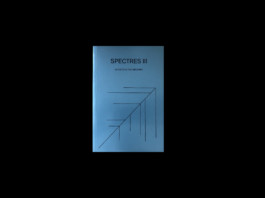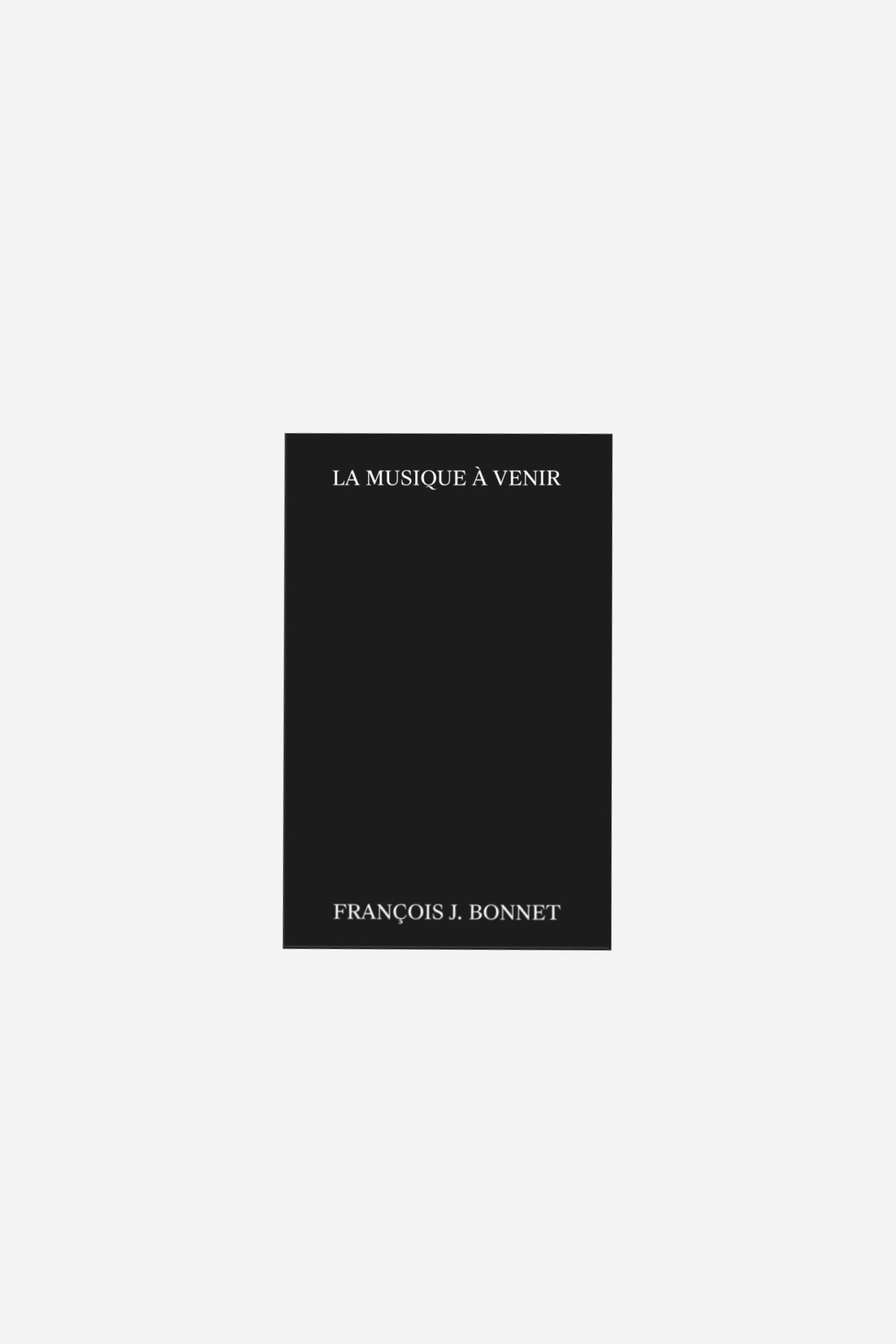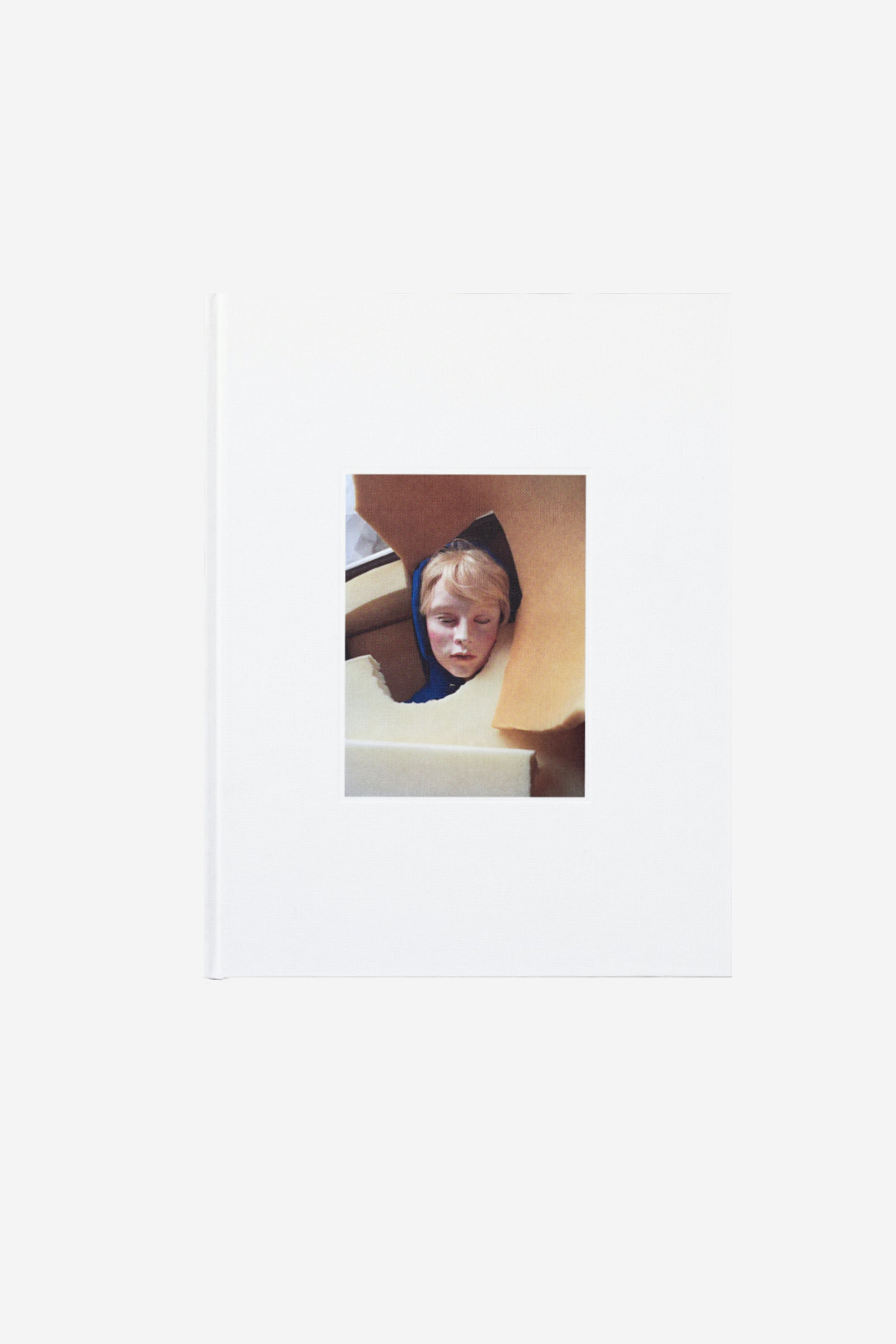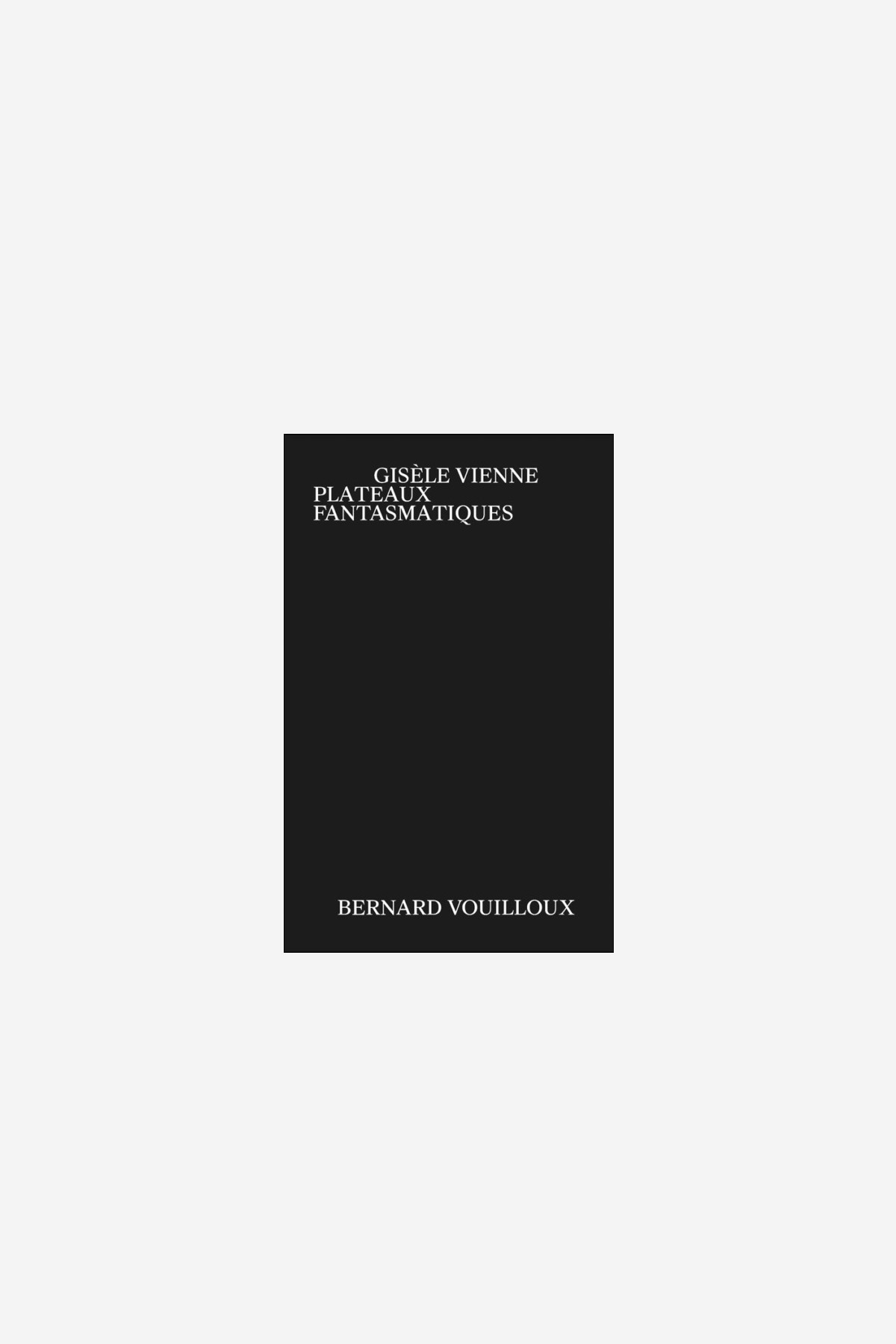
SPECTRES
Volume 3: Ghosts in the Machine / Fantômes dans la machines
→ ORDER
—
Metadata
236 pp.
thread-sewn softcover
1 color offset
Size: 135 x 200 cm
First edition, first printing: 2500
Language(s): French / English
Regneville sur Mer / Paris, November 2021
ISBN: 978-2-36582-043-1
Edition Number: 1
Authors
Keith Fullerton Whitman
Émilie Gillet
Steve Goodman
Florian Hecker
James Hoff
Roland Kayn
Ada Lovelace
Robin Mackay
Bill Orcutt
Matthias Puech
Akira Rabelais
Lucy Railton
Jean-Claude Risset
Sébastien Roux
Peter Zinovieff.
Forwords
The expression ‘ghost in the machine’ emerged within a particular context, namely as a critique of Cartesian dualism’s separation of soul and body, and thus served to revive a certain mechanistic materialism. In simple terms, this critique denies the existence of an independent soul (the ‘ghost’) contained in a corporeal organism (the ‘machine’). It asserts, on the contrary, that the ‘soul’ is just a manifestation of the body—that ultimately they are one and the same. Although this remains a fraught question, always accompanied by the risk of slipping into the register of belief, it is resurfacing today in relation to the emergence of artificial intelligences: Can there be such a thing as an artificial intelligence? Can such an intelligence really add up to something more than the sum total of the binary operations that generate it? And what exactly is the ‘artificial’? The artificial always brings with it the fantasy of emancipation and autonomy, and a break with a supposedly natural order of things. It is subversive. AI, precisely in so far as it is artificial, embraces this subversion, hybridizing the Promethean and the Faustian, heralding as many promises as potential dangers, and raising the stakes as high as the survival or extinction of humanity itself. In this respect, the domain of musical creation constitutes a kind of front line, at once a terrain of exploration for possible applications of AI and a domain that boasts an already substantial history of the integration of machines and their calculative power into creative processes. From algorithmic composition to methods of resynthesis, from logical approaches to the creation of cybernetic systems, from the birth of computer music to neural networks, for more than half a century now music has been in continual dialogue with the binary universe of electron flows and the increasingly complex systems that control them. Each of the texts included here, in its own way, reveals a different facet of the strange prism formed by this alliance. Each projects its own particular spectrum—or spectre; each reveals a ghost, evokes an apparition that is a composite of ideas, electricity, and operations. This book, then, does not set out to cut the Gordian knot constituted by the question of the possible mutations and becomings of binary logic, and in particular its most recent avatar, AI. On the contrary, it seeks to shed a diverse light upon the many possible ways of coming to grips with it today, and upon the dreams, promises, and doubts raised by these becomings, whether actualised in the creation of codes and programs to assemble sounds or infusing a whole compositional project; whether they reveal the algorithmic dimension of the human being, or directly take over the writing of the text itself, rising to the authorial level. Above all, though, what is at stake here is to discover how these developments resonate together, and how this resonance manifests itself through all these approaches, all these reflections, all these modes of creation and of living. For the artificial, the artefact, is always the extro-human brainchild of a human, all too human dream.
— The Editors
A Propos
L’expression « fantôme dans la machine » a trouvé naissance dans un contexte particulier, celui de la critique du dualisme cartésien séparant l’âme et le corps, renouant ainsi avec un certain matérialisme mécaniste. Pour le dire simplement, cette approche nie l’existence d’une âme indépendante (le fantôme) qui serait véhiculée par un organisme corporel (la machine). Elle affirme, au contraire, que « l’âme » n’est qu’une manifestation du corps et ne fait qu’un avec lui. Si cette question est encore délicate à trancher, risquant à tout moment de glisser dans le registre des croyances, elle se réactualise à présent autour de l’émergence des intelligences artificielles : est-ce qu’une telle intelligence existe ? Ne se réduit-elle pas à la somme des opérations binaires qui la génère ? Et qu’est-ce au juste que l’artificiel ? L’artificiel porte toujours en lui un fantasme d’émancipation, d’autonomie et de rupture avec un ordre supposé naturel des choses. Il est subversif. L’IA, en tant, justement, qu’artificielle, embrasse une telle subversion, hybridant les mythes prométhéen et faustien, augurant tout autant de promesses que de dangers potentiels, poussant les enjeux aussi haut que la survie ou l’extinction de l’humanité. À ce titre, le domaine de la création musicale fait figure d’avant-poste. Il est à la fois un terrain d’exploration des applications possibles de l’IA et un domaine possédant déjà une histoire assez longue dans l’intégration des machines et leur puissance de calcul dans le processus de création. De la composition algorithmique aux méthodes de resynthèse, de l’approche logique à la création de systèmes cybernétiques, de la naissance de l’informatique musicale aux réseaux de neurones, la musique, depuis plus d’un demi-siècle, a entamé un dialogue ininterrompu avec l’univers binaire des flux d’électrons et des systèmes de plus en plus complexes qui les gouvernent. Les textes à venir racontent, chacun à leur manière, une face différente de ce prisme étrange que forme une telle alliance. Ils projettent chacun un spectre particulier, révèlent un fantôme, et évoquent une apparition composite d’idées, d’électricité et d’opérations. Ce livre ne se destine donc pas à essayer de trancher le nœud gordien que constitue la question des possibles devenirs et mutations de la logique binaire, et notamment de son dernier avatar, l’IA. Il propose au contraire d’apporter un éclairage multiple sur les manières possibles de s’en emparer, des rêves, des promesses et des doutes que ces devenirs soulèvent, qu’ils s’actualisent dans la création de codes et de programmes pour chevaucher les sons, qu’ils insufflent tout un projet compositionnel, qu’ils révèlent l’algorithmique chez l’humain ou encore qu’ils s’emparent directement de la rédaction du texte lui-même, se hissant à la hauteur de l’auteur. Mais plus que tout, l’enjeu, ici, est d’établir en quoi ces devenirs peuvent résonner et comment cela se manifeste, au travers de toutes ces démarches, de toutes ces réflexions, de toutes ces manières de créer et d’être en vie. Car l’artificiel, l’artefact, est toujours l’enfant hors humain d’un rêve humain, trop humain. Les éditeurs
— Les éditeurs.

SPECTRES
Volume 3: Ghosts in the Machine / Fantômes dans la machines
→ ORDER
—
Metadata
236 pp.
thread-sewn softcover
1 color offset
Size: 135 x 200 cm
First edition, first printing: 2500
Language(s): French / English
Regneville sur Mer / Paris, November 2021
ISBN: 978-2-36582-043-1
Edition Number: 1
Authors
Keith Fullerton Whitman
Émilie Gillet
Steve Goodman
Florian Hecker
James Hoff
Roland Kayn
Ada Lovelace
Robin Mackay
Bill Orcutt
Matthias Puech
Akira Rabelais
Lucy Railton
Jean-Claude Risset
Sébastien Roux
Peter Zinovieff.
Forwords
The expression ‘ghost in the machine’ emerged within a particular context, namely as a critique of Cartesian dualism’s separation of soul and body, and thus served to revive a certain mechanistic materialism. In simple terms, this critique denies the existence of an independent soul (the ‘ghost’) contained in a corporeal organism (the ‘machine’). It asserts, on the contrary, that the ‘soul’ is just a manifestation of the body—that ultimately they are one and the same. Although this remains a fraught question, always accompanied by the risk of slipping into the register of belief, it is resurfacing today in relation to the emergence of artificial intelligences: Can there be such a thing as an artificial intelligence? Can such an intelligence really add up to something more than the sum total of the binary operations that generate it? And what exactly is the ‘artificial’? The artificial always brings with it the fantasy of emancipation and autonomy, and a break with a supposedly natural order of things. It is subversive. AI, precisely in so far as it is artificial, embraces this subversion, hybridizing the Promethean and the Faustian, heralding as many promises as potential dangers, and raising the stakes as high as the survival or extinction of humanity itself. In this respect, the domain of musical creation constitutes a kind of front line, at once a terrain of exploration for possible applications of AI and a domain that boasts an already substantial history of the integration of machines and their calculative power into creative processes. From algorithmic composition to methods of resynthesis, from logical approaches to the creation of cybernetic systems, from the birth of computer music to neural networks, for more than half a century now music has been in continual dialogue with the binary universe of electron flows and the increasingly complex systems that control them. Each of the texts included here, in its own way, reveals a different facet of the strange prism formed by this alliance. Each projects its own particular spectrum—or spectre; each reveals a ghost, evokes an apparition that is a composite of ideas, electricity, and operations. This book, then, does not set out to cut the Gordian knot constituted by the question of the possible mutations and becomings of binary logic, and in particular its most recent avatar, AI. On the contrary, it seeks to shed a diverse light upon the many possible ways of coming to grips with it today, and upon the dreams, promises, and doubts raised by these becomings, whether actualised in the creation of codes and programs to assemble sounds or infusing a whole compositional project; whether they reveal the algorithmic dimension of the human being, or directly take over the writing of the text itself, rising to the authorial level. Above all, though, what is at stake here is to discover how these developments resonate together, and how this resonance manifests itself through all these approaches, all these reflections, all these modes of creation and of living. For the artificial, the artefact, is always the extro-human brainchild of a human, all too human dream.
— The Editors
A Propos
L’expression « fantôme dans la machine » a trouvé naissance dans un contexte particulier, celui de la critique du dualisme cartésien séparant l’âme et le corps, renouant ainsi avec un certain matérialisme mécaniste. Pour le dire simplement, cette approche nie l’existence d’une âme indépendante (le fantôme) qui serait véhiculée par un organisme corporel (la machine). Elle affirme, au contraire, que « l’âme » n’est qu’une manifestation du corps et ne fait qu’un avec lui. Si cette question est encore délicate à trancher, risquant à tout moment de glisser dans le registre des croyances, elle se réactualise à présent autour de l’émergence des intelligences artificielles : est-ce qu’une telle intelligence existe ? Ne se réduit-elle pas à la somme des opérations binaires qui la génère ? Et qu’est-ce au juste que l’artificiel ? L’artificiel porte toujours en lui un fantasme d’émancipation, d’autonomie et de rupture avec un ordre supposé naturel des choses. Il est subversif. L’IA, en tant, justement, qu’artificielle, embrasse une telle subversion, hybridant les mythes prométhéen et faustien, augurant tout autant de promesses que de dangers potentiels, poussant les enjeux aussi haut que la survie ou l’extinction de l’humanité. À ce titre, le domaine de la création musicale fait figure d’avant-poste. Il est à la fois un terrain d’exploration des applications possibles de l’IA et un domaine possédant déjà une histoire assez longue dans l’intégration des machines et leur puissance de calcul dans le processus de création. De la composition algorithmique aux méthodes de resynthèse, de l’approche logique à la création de systèmes cybernétiques, de la naissance de l’informatique musicale aux réseaux de neurones, la musique, depuis plus d’un demi-siècle, a entamé un dialogue ininterrompu avec l’univers binaire des flux d’électrons et des systèmes de plus en plus complexes qui les gouvernent. Les textes à venir racontent, chacun à leur manière, une face différente de ce prisme étrange que forme une telle alliance. Ils projettent chacun un spectre particulier, révèlent un fantôme, et évoquent une apparition composite d’idées, d’électricité et d’opérations. Ce livre ne se destine donc pas à essayer de trancher le nœud gordien que constitue la question des possibles devenirs et mutations de la logique binaire, et notamment de son dernier avatar, l’IA. Il propose au contraire d’apporter un éclairage multiple sur les manières possibles de s’en emparer, des rêves, des promesses et des doutes que ces devenirs soulèvent, qu’ils s’actualisent dans la création de codes et de programmes pour chevaucher les sons, qu’ils insufflent tout un projet compositionnel, qu’ils révèlent l’algorithmique chez l’humain ou encore qu’ils s’emparent directement de la rédaction du texte lui-même, se hissant à la hauteur de l’auteur. Mais plus que tout, l’enjeu, ici, est d’établir en quoi ces devenirs peuvent résonner et comment cela se manifeste, au travers de toutes ces démarches, de toutes ces réflexions, de toutes ces manières de créer et d’être en vie. Car l’artificiel, l’artefact, est toujours l’enfant hors humain d’un rêve humain, trop humain. Les éditeurs
— Les éditeurs.




